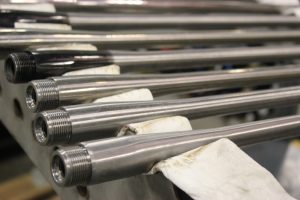The Truth Behind Twist Rates
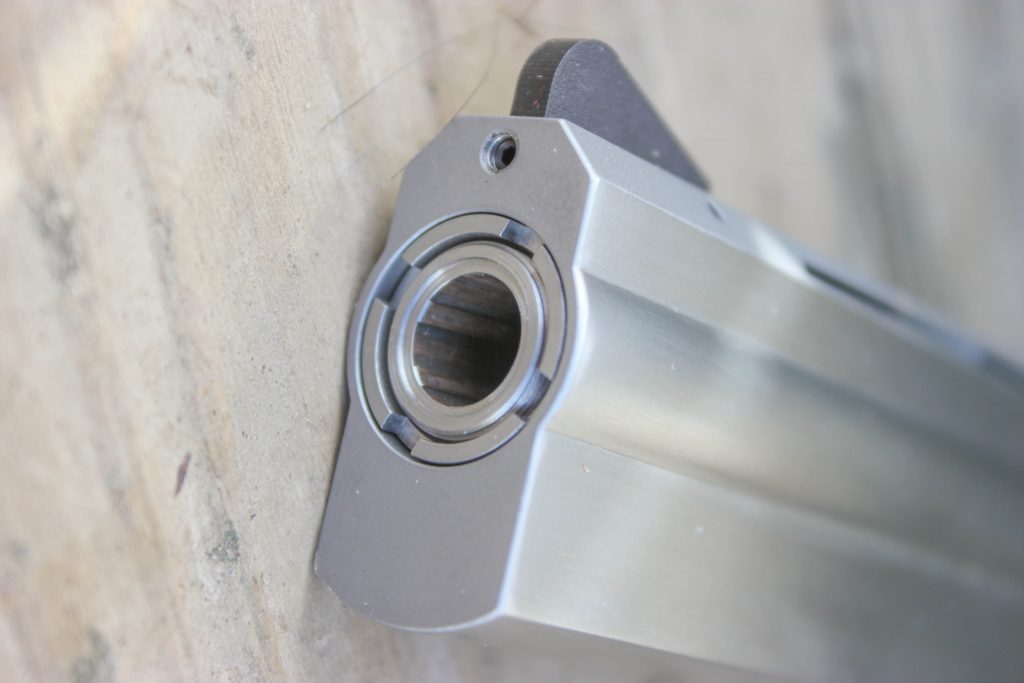 |
| Pistols and revolvers—and even some slug shotguns—have rifling, too. Here you can plainly see the rifling twist at the muzzle of this semi-auto handgun. |
The creation of “rifling” is one of the most significant advances in firearms history. Cut down the length of the interior of the barrel surface in a curving or spiral manner, rifling is comprised of “lands” (the portion of the rifling with the smallest diameter) and “grooves” (the portion of the rifling with the widest diameter). These lands and grooves cause a bullet to rotate along its long axis, improving the bullet’s stability and accuracy, much in the way quarterbacks control the football in flight when they throw a tight spiral.
Rifling has been around since the 1500s, but it wasn’t common to see rifled barrels until the 19th century. By then, militaries and civilians alike had begun to appreciate the value of rifled barrels, and manufacturers like Winchester and Smith & Wesson made rifled barrels standard equipment on pistols and rifles.
One significant feature of rifling you’ll often hear discussed is its “twist rate.” This describes the spiral of the rifling as it runs the length of the barrel, and it is a measurement usually expressed in the inches required for the rifling to make one complete turn inside the barrel. For example, a rifle with a 1-in-12 rate of rifling twist (usually written 1:12) has rifling that makes one complete rotation inside the barrel for every foot of barrel length. Another way to think of it is that in a 1:10 twist barrel, your bullet is rotating once for every 10 inches of barrel. Very old guns often had “slow” rifling twists such as 1:48, but today rifling rate twists of 1:7, 1:9 or 1:12 are much more common.
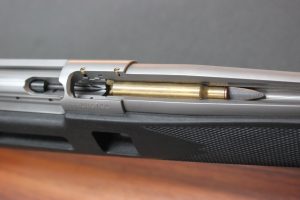
A demo rifle with the top of the receiver and barrel cut away to show a dummy cartridge in the chamber, its projectile pointing at the beginning of the rifling inside the barrel.
There are several benefits to understanding rate twists in rifles and handguns. For starters, it will help you match firearms with bullets of proper weight to obtain maximum accuracy. If your rate twist is off—meaning you are spinning a light bullet too quickly or a heavy bullet too slowly—you lose what is called “gyroscopic stabilization,” or the smooth, stable, accurate spin that is required for maximum accuracy. You need the bullet to be stabilized as it leaves the gun, and that requires proper rate twist.
The good news is that most firearms manufacturers already equip their guns with barrel rate twists that work with a variety of common-weight ammunition, so it’s not absolutely critical in many cases that you match a gun’s twist rate to the correct bullet weight. That doesn’t mean that you can’t do a little homework and better coordinate your barrel’s twist rate to a bullet weight and up your odds of better accuracy. Many 1911 .45 semi-autos, for example, have a 1:16 twist rate which is suitable for most over-the-counter .45 ACP loads, but a little experimenting with different bullet weights may let you discover that some perform better than others (though of course, such improvement may have to do with a variety of factors, not just rifling rate twist).
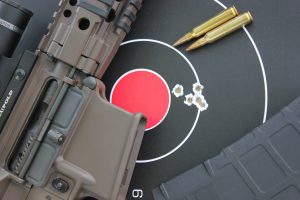
Today’s MSRs come in a variety of twist rates. Understanding what bullet weights and styles work with what twist rate can greatly improve accuracy.
There are situations that call for careful selection of rate twist and ammunition. One of the best examples is the .223/5.56mm rifle in the AR-15 modern sporting rifle (MSR) platform, which has, over time, been used with a variety of different style bullets and grain weights. Originally, the first M16s (the military version of the AR-15) in the 1960s utilized 55-grain projectiles and 1:14 twist rate barrels. However, it was soon discovered that heavier bullets offered better wind resistance and made long-range shots easier, so heavier bullets were switched to. These heavier bullets—like the 62-grain full metal jacket—wouldn’t stabilize in the 1:14 twist barrels, though, because the rifling twist was too slow, so the military started using 1:12 barrels. Over time, however, heavier .223-inch bullets have become more popular for long-range shooting and hunting, and these heavier bullets—weighing from 69 up to 90 grains—required accordingly faster twist rates to stabilize them. So, in general, heavier bullets require faster twist rates.
The .223 rifle is a good example of how understanding the twist rate “sweet spot” will help you shoot much more accurately. If you strictly shoot the lighter 50-, 52- or 55-grain bullets (as many varmint and predator hunters using this cartridge do), then you’ll be well suited with a slower twist rate rifle like a 1:12 or a 1:10. If, however, you plan to utilize heavier, longer, bullets like the 69- or 72-grain offerings, than a faster twist rate is what’s appropriate, either a 1:9 or a 1:8. The very heaviest bullets—80 grains and up—and firearms that generate low velocities like AR pistols, use 1:7 twists. This very fast twist rate allows for a lot of versatility with heavier loads, but accuracy potential with very light 50 and 55 grain loads is low. If you’re looking for an all-around .223, the 1:9 rate twist seems to work well, because it will stabilize bullets ranging from 55 grains on up to a variety of heavier long-range projectiles.
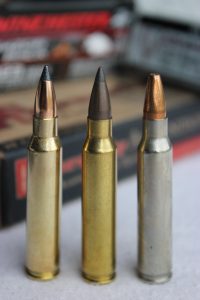
These .223 rounds all wear bullets of different design and weight. Experimenting with a variety of ammo in you rifle’s caliber can help you discover which bullet weight and style are most accurate.
By and large, most production firearms have a twist rate that is optimized for common loads, so you don’t absolutely have to know your rate twist. Indeed, if you ask a cross-section of hunters and shooters about the rate twist in their rifles many won’t know it. However, understanding how rifling rate twists work can truly improve your shooting, as shown by the .223 example above. If nothing else, learning about rate twists should encourage you to try different weight bullets in your firearm and find which loads really work best in your gun.
